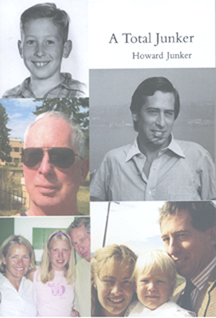When I was a boy, just after the War, in Chappaqua, New York, we didn’t own many “new” books. We subscribed to LIFE and the Saturday Evening Post, and we had a World Book encyclopedia and a multi-volume study of American military campaigns; I specialized in our wars against the Indians.
So I don’t know how to account for our possession of I Remember Distinctly: A Family Album of the American People 1918–1941, published in 1947. Perhaps it was a gift, but from whom?
In any case, I read it religiously as a pre-teenager, that is, regularly, year after year.
What I liked about this hodgepodge of vintage photos spiced with captions by the editor of Harper’s Magazine, the social historian Frederick Lewis Allen, was that it showed me that things changed! That they had been wonderfully, iconically different back then. That there had once been a Golden Age.
After the Depression and WWII, we needed a new Golden Age.
This book is not modeled on that one, but it is suffused with a similar nostalgia, the sense I have of a lost world, a forgotten half-decade, one that has been (unjustly) obscured by being sandwiched between two great epochs, The War and The Fifties.
I would like to open this time capsule now, because enough time has elapsed.
I want to revisit myself as a boy who felt himself to be at the center of the universe—not that it revolved around me, but that I felt I had access to all of it. Even and especially to stuff that was extremely remote, that I didn’t understand at all. This is a very boyish fantasy, of course; as we learn soon enough, we have contact with very little of the larger world, and, more than that, we are well advised to stay out of the path of history’s juggernaut.
This album has a geographic, as well as a temporal, focus—on the sleepy hamlet, Chappaqua, 35 miles north of New York City, now known because the Clintons have lived there, but, back then, offering, primarily, an example of a new kind of place, not the country exactly, but something slightly more rustic than suburban. (The term “exurb” dates to 1955.)
It is, then, my story as a boy, augmented. Its narrative is woven with my own words as the web and the voices of others as the woof. Autobiography as anthology.
One model I’d also like to acknowledge is Michael Lesy’s Wisconsin Death Trip (1973), which matched a small town’s 1890s photographs with mostly grim, contemporary newspaper stories about murders, arsons, suicides… I don’t take such an uncompromisingly dark view; I’m fueled by boyish exuberance and anticipation. I celebrate the creative spirits of my hometown. And I hang with the local heroes, from Horace Greeley to Vanessa Williams.
The classic, though not my conscious, model for such an effort would be the U.S.A trilogy—Dos Passos called his mashup a “four-way conveyor system”
1) fragments of fiction
2) collages of headlines, news stories, ads, and song lyrics
3) potted bios of celebs
4) personal maunderings, under the rubric “Camera Eye,” as in the montages of Dziga Vertov.
Closer to me are Michael Martone’s genre-bending explorations of Indiana, especially The Blue Guide to Indiana (2001). I am inspired by his relentless, often hilarious, discovery of new ways to package the goods.
And the films of Ken Burns with their bittersweet mix of stock footage, interviews, photos, diaries, letters, popular songs….
Of course, I’m inspired by scrapbooking—and Facebooking; memoirizing is what everyone does these days, even and especially oldsters like me. Consider this a very poky hypertext.
And don’t forget that I was trained in “close reading” by the New Criticism; I was taught to point to the significant passage.
And in my youth I wrote profiles and reviews for magazines—as in “storehouses,” or, as the French put it grandly, “department stores”—omnium-gatherums.
And in my middle age, I ran a literary magazine, a notoriously frustrating way to try to harness others to articulate one’s own desires and nightmares.
So the potpourri—and the palimpsest—is my natural format.
The sweeping, monolithic narrative is beyond me; I like the constraints of one-page-one-thought. Chronology as anecdote. My life and times (and place), as the evocative, not the definitive, edition.
Let’s just say this book is an idyll, as in Theocritus, “a small intimate world…scenes from everyday life.”
And let’s note that its period, the postwar, was a turning point, as America switched from fighting Fascism to fighting Communism. And as the first Boomers were born.
Meanwhile, its narrator, the Cub Scout of the Holy Grail, explores his innocence, undergoing an ordeal, a trial of that innocence. He moves to a “hometown,” starts school, and loses his father.
I say all this—I give away the plot—to alert you that is a formalist, not a confessional, memoir. Unlike Proust’s fleuve of consciousness, which is anthropological in its immersion in society, here the mnemonic device is archaeological in its attempt to piece together discarded, lost, abandoned fragments into a reasonable replica, an obviously battered, but still recognizable vessel of identity.
Or is the word vassal?
A Sleepy Intro
Posted in Daily Blog
